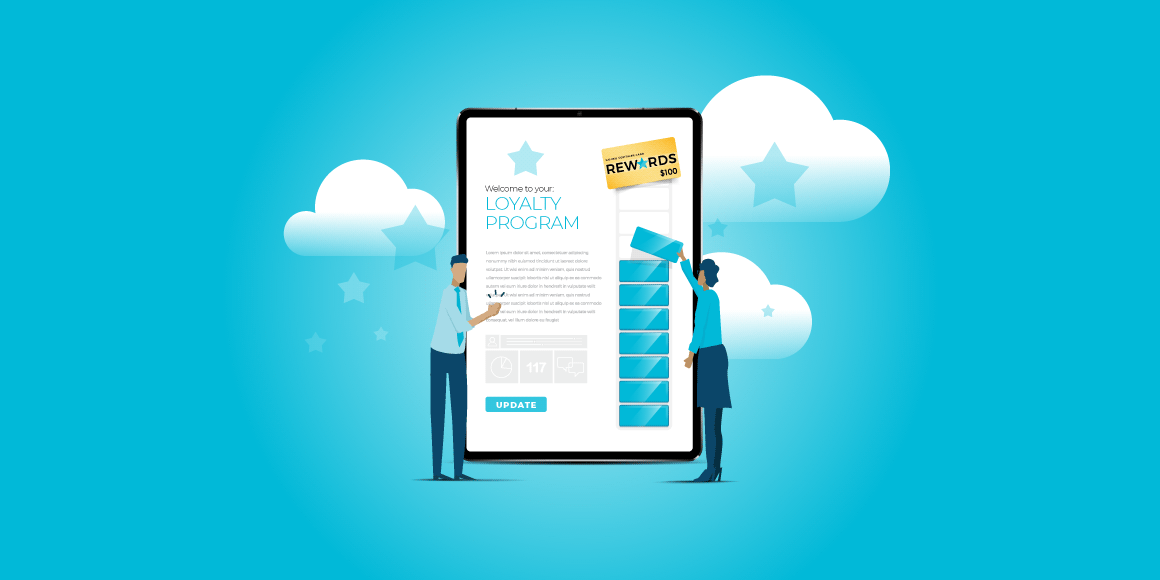4. Understand Your Data and Set Up Tracking
First, start with what you know about your customers. Do you have past purchase data? This information can be useful for ensuring that payout on rewards will be meaningful and effective.
You can also build earning structure off of this information. Knowing how much someone has purchased in the past is a good indicator of their potential for growth.
Tracking is also vital for your program. Do you have a way to submit purchase information that can be easily turned into a reward vehicle? If not, you may need to set up a claims system.
5. Create a System of Engagement
One major pitfall of B2B customer loyalty programs is that administrators will fall into what’s comfortable and never run engaging special promotions after launch. A loyalty program should not be a simple “set it and forget it” asset.
People want to feel engaged. Layered promotions, or different and exciting ways to earn rewards, are both great ways to stay top of mind when running a loyalty program. This is because they surprise customers with a new way to earn and break the monotony of the day-to-day grind.
How to Truly Make Your B2B Customer Loyalty Program Successful
Now that we’ve covered why and gone over the setup, let’s talk differentiators. What is going to make your B2B customer loyalty program stand out?
In the words of Don Draper, “Success is related to standing out, not fitting in… One wants to be the needle in the haystack, not the haystack.”
If you’re offering a loyalty program because it’s what your competitors are doing, you might as well stop reading now. It’s never going to work. You need to be different. You need to stand out.
Here’s how you do that.
Behind the Scenes
Take a look behind the curtain. The most important aspect of a program like this is stellar administration.
This goes beyond the day-to-day stuff. What you’re trying to do is implement change and manage the outcome. Asking your customers to change their buying habits or asking your MFG reps to adjust the way they sell can be met with a lot of backlash.
You may be thinking, “But I’m giving them something better!” And you are. But you have to help them see it that way instead of it being just another disruption.
Provide them with a structured roll out, a healthy communication lifecycle and a solid understanding of what they need to do. And make it simple! Another big pitfall of B2B loyalty programs is making it too complicated.
The Knoster Model for change management is a great place to start when it comes to strategizing a launch.

Take a look at this diagram. We see that the outcomes on the right can resemble the outcomes of the launch of our B2B customer loyalty program.
If we’re missing even a single piece of this puzzle come launch, the program can be met with anxiety from our sales team.
It can create confusion with our customers.
And it can cause frustration from our internal stakeholders, among other things.
Remember when we talked about expanding your audience to include your sales personnel? The reason we suggest that a sales team be incentivized alongside a B2B customer loyalty program is because of this model.
You can see that if the incentive (in this case the sales incentive designed to encourage your sales team to push the program) is missing, then the launch will be met with resistance. Your sales team might be wondering, “What’s in it for me? The way I sell right now works just fine.”
Rolling out a loyalty program is more than just creating branded content and nice marketing. It’s about setting up yourself, your team, and your customers for an adjustment to success.
Customer Experience
When it comes to creating a better customer experience through a B2B customer loyalty program, you also want to think of the outcome of your program, but this time from your customer’s point of view. To do this, you’ll need to really know who your customers are.
Collecting data is always a surefire way to find out more about customers. But what if data isn’t enough?
Clayton Christensen claims that customers “hire” our products/services in order to fulfill a “job.” This “job” could be to feed themselves in that moment, or provide their kids with a source of entertainment tonight, or to do their own job better.
You’ll want to dive down deep into the heart of what your customers want. Let’s say you run a survey and you find that your customers are struggling to understand installation. This might be making their lives a nightmare.
A great way to supplement your product purchases is offering a training seminar on the product. This is a value-added service that gets down to the bottom of what your customers really want: to be taught how to install the product.
Now, if you then reward people for coming to those seminars, try dishing out loyalty points in your B2B customer loyalty program. You’re not only guaranteed higher attendance, but happier customers as well.
Conclusion
While this all might seem like a lot, it’s an achievable endeavor. Many organizations have run spectacular B2B loyalty programs that have won them hundreds of millions of dollars of incremental business.
That said, no successful loyalty program is easy. That’s why it also pays to stay ahead of the market when it comes to the best ways to motivate your audience.




